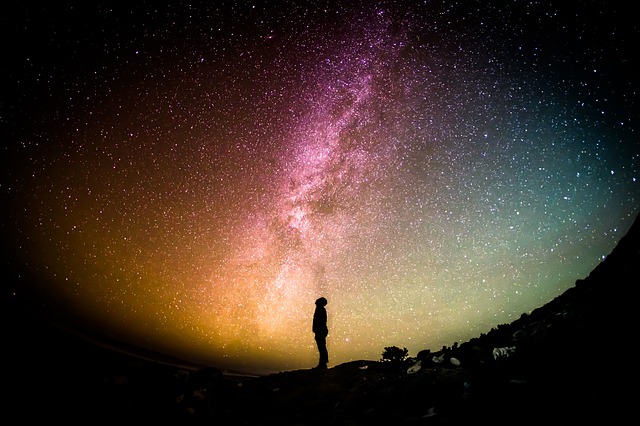Activity: Expanding universe

The universe has existed and will exist far beyond the time during which humans have lived on the earth. In this activity you will be introduced to the Doppler effect (if you're not already studying AHL Waves) and come to investigate the relationship between recession velocity and distance of galaxies from the earth. We'll develop a statement for Hubble's law and understand it's significance as well as the idea of expanding space-time and. Let's estimate the age of the universe and consider the relevance of the CMB.
Cosmology is the study of the Universe which up to now (in this course) has been modeled by Newton's universal law of gravitation but this had some problems for scientists 100 years ago.
100 years ago it was accepted that the Universe was static but how can it be static if gravity is acting on everything.
- Explain why Newton might have thought the Universe should be contracting.
- Given that the Universe was static, why might Newton conclude that it was infinite?
- if the universe was infinite and static, why does this imply that time is also infinite?
- Why would the night sky be completely filled with stars if both space and time were infinite in a static universe?
If the universe is expanding then in the past it must have been smaller, this led to the idea that the universe started with a big bang. At the beginning there was no distance between the galaxies so the age of the universe can be found from separation now /velocity. This is the same as 1/Ho.
- Calculate the age of the universe from the gradient of your graph. (you will have to convert the units to SI)






